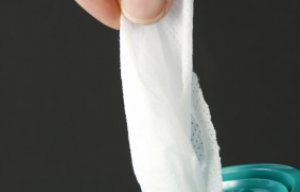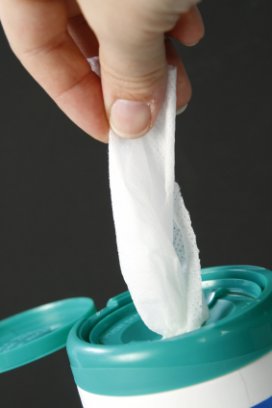
Kelheim’s Viloft fibre receives certificate
The company suggests substituting conventional wet wipes by wet wipes made with Kelheim’s viscose speciality short cut fibre and cellulose.

24th August 2017
Innovation in Textiles
|
Kelheim
The company believes that substituting conventional wet wipes, which usually contain a significant share of synthetic fibres, by wet wipes made with Kelheim’s viscose speciality short cut fibre Viloft and cellulose would help solve the problem. Both raw materials are plant-based and therefore completely bio-degradable.
With moist toilet tissue in particular, disposal via the toilet is clearly the obvious solution – but in contrast to conventional wipes containing polyester, wipes made of Viloft short cut fibres can be flushed without concern, the company explains. According to Kelheim Fibres, there is no reason to fear neither entry of plastic particles into the oceans, nor the blockage of private or municipal sewage systems. “Wipes made of Viloft short cut fibres disintegrate in the sewage systems to small particles that do not harm this infrastructure,” says the manufacturer.
At the 56th International Man-made Fibers Congress, which will take place next month in Dornbirn, Austria, Business Manager Horst Wörner will speak about Kelheim’s contribution to the reduction of marine litter. His colleagues Dr Nina Köhne and Dr Roland Scholz will present further innovations of the Bavarian fibre specialist.
Dr Köhne will present the result of a joint research project with Resorba: based on the bio-polymers cellulose and collagen, the scientists created a multifunctional wound dressing that is said to be significantly superior to reference products as a result of its pH-indication and its gel-forming and wound healing properties.
Dr Scholz will speak about carbon fibres that can also be manufactured sustainably, of the renewable raw material like cellulose, by using viscose fibres as precursors. Dr Scholz explained the benefit: “By modifying the viscose fibre during its production, the course of the subsequent carbonisation can be changed in specific ways. For instance, a significant increase in the yield of carbon as well as a reduction of undesirable pyrolysis by-products was achieved.”

Business intelligence for the fibre, textiles and apparel industries: technologies, innovations, markets, investments, trade policy, sourcing, strategy...
Find out more